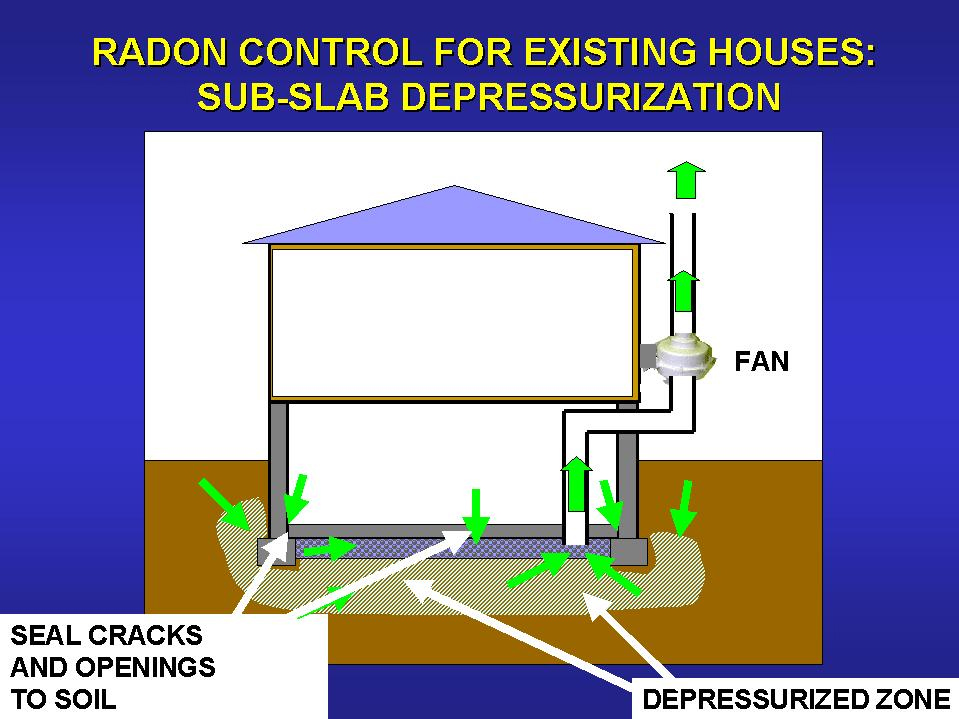There are several methods a radon mitigation technician can use to lower radon levels in your home. Some techniques reduce radon from entering your home while others reduce radon levels after it has entered. EPA generally recommends methods which reduce radon entry. Soil suction, for example, prevents radon from entering your home by drawing the radon from below the home and venting it through a pipe, or pipes, to the air above the home where it is quickly diluted.
Radon Mitigation Techniques
Home Foundation Types
Your home type will affect the kind of radon mitigation system that will work best. Homes are generally categorized according to their foundation design. For example: basement, slab-on-grade, concrete poured at ground level; or crawlspace, a shallow unfinished space under the first floor. Some homes have more than one foundation design feature. For instance, it is common to have a basement under part of the home and to have a slab-on-grade or crawlspace under the rest of the home. In these situations a combination of radon mitigation techniques may be needed to reduce radon levels to below 4 pCi/L.
Each house is unique
Because a radon mitigation system is not a one design fits all houses, it is necessary for a mitigation technician to assess the foundation and design a system that is best for your house. Call for free estimates.

